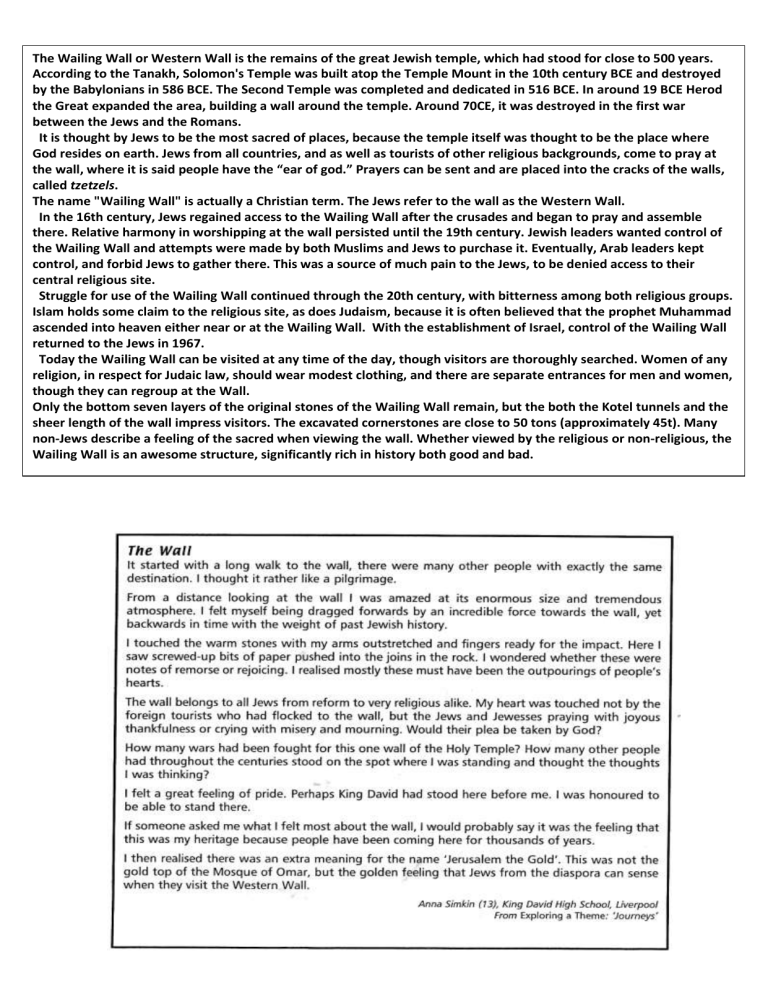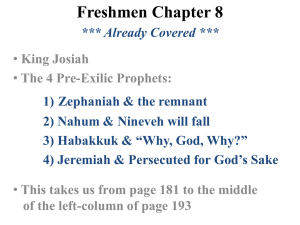Wailing Wall worksheet

The Wailing Wall or Western Wall is the remains of the great Jewish temple, which had stood for close to 500 years.
According to the Tanakh, Solomon's Temple was built atop the Temple Mount in the 10th century BCE and destroyed by the Babylonians in 586 BCE. The Second Temple was completed and dedicated in 516 BCE. In around 19 BCE Herod the Great expanded the area, building a wall around the temple. Around 70CE, it was destroyed in the first war between the Jews and the Romans.
It is thought by Jews to be the most sacred of places, because the temple itself was thought to be the place where
God resides on earth. Jews from all countries, and as well as tourists of other religious backgrounds, come to pray at the wall, where it is said people have the “ear of god.” Prayers can be sent and are placed into the cracks of the walls, called tzetzels.
The name "Wailing Wall" is actually a Christian term. The Jews refer to the wall as the Western Wall.
In the 16th century, Jews regained access to the Wailing Wall after the crusades and began to pray and assemble there. Relative harmony in worshipping at the wall persisted until the 19th century. Jewish leaders wanted control of the Wailing Wall and attempts were made by both Muslims and Jews to purchase it. Eventually, Arab leaders kept control, and forbid Jews to gather there. This was a source of much pain to the Jews, to be denied access to their central religious site.
Struggle for use of the Wailing Wall continued through the 20th century, with bitterness among both religious groups.
Islam holds some claim to the religious site, as does Judaism, because it is often believed that the prophet Muhammad ascended into heaven either near or at the Wailing Wall. With the establishment of Israel, control of the Wailing Wall returned to the Jews in 1967.
Today the Wailing Wall can be visited at any time of the day, though visitors are thoroughly searched. Women of any religion, in respect for Judaic law, should wear modest clothing, and there are separate entrances for men and women, though they can regroup at the Wall.
Only the bottom seven layers of the original stones of the Wailing Wall remain, but the both the Kotel tunnels and the sheer length of the wall impress visitors. The excavated cornerstones are close to 50 tons (approximately 45t). Many non-Jews describe a feeling of the sacred when viewing the wall. Whether viewed by the religious or non-religious, the
Wailing Wall is an awesome structure, significantly rich in history both good and bad.
THE WAILING WALL
Fill in the worksheet as follows:
Fill the top 3 boxes with explanations of what the Wailing Wall is/used to be part of
Fill the second row with why it is considered Holy
Fill the third row with what Jews would do at the Wailing Wall
Fill the bottom row with 3 prayers YOU might wedge between the walls








